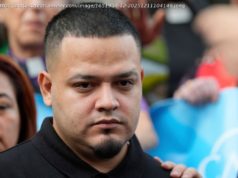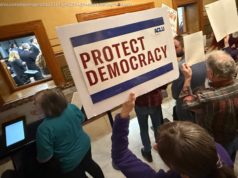The way Justices Brett Kavanaugh and John Roberts voted could say a lot about the Court in the wake of the Kavanaugh confirmation fight.
The Supreme Court on Monday declined to take up two cases that could have given states broader leeway to strip funding from Planned Parenthood.
By denying certiorari in Gee v. Planned Parenthood of Gulf Coast and Andersen v. Planned Parenthood of Kansas and Mid-Missouri, the Court let stand lower court rulings that states cannot ban Planned Parenthood from receiving Medicaid reimbursements when the group treats low-income patients. A number of states had sought to institute such bans in recent years.
Planned Parenthood praised the Court’s decision, as the group has long argued that restricting Medicaid payments would jeopardize low-income patients’ access to potentially lifesaving services like cancer screenings and testing for sexually transmitted infections.
“We are pleased that lower court rulings protecting patients remain in place,” said Leana Wen, president of the Planned Parenthood Federation of America, in a statement to the media on Monday. “As a doctor, I have seen what’s at stake when people cannot access the care they need, and when politics gets in the way of people making their own health care choices.”
The Court’s decision also offers a glimpse into the inner workings of the Supreme Court in the aftermath of the confirmation of Justice Brett Kavanaugh. Kavanaugh joined the majority to allow the lower court’s decision to stand, leading some to speculate that he and others on the Court want to avoid cases related to abortion rights or Planned Parenthood for now after his bruising confirmation fight.
Justice Clarence Thomas said as much in his dissenting opinion, in which he also cited the claim that Planned Parenthood was engaged in the “illegal sale of fetal organs” — an unsubstantiated claim made by an anti-abortion group whose members were later charged with a felony.
The Court’s decision about Gee and Andersen doesn’t tell us how it would rule in a challenge to Roe, which could come at any time. But it does give us some clues about how the justices are approaching the issue of abortion today.
Andersen v. Planned Parenthood came about because, in 2016, the state of Kansas announced its intent to bar Planned Parenthood from receiving Medicaid payments. It was one of several states to make such a move in the wake of hidden-camera videos released by an anti-abortion group called the Center for Medical Progress in 2015, which purported to show that Planned Parenthood was engaged in the illegal sale of fetal tissue for profit.
Start
United States
USA — Criminal The Supreme Court’s surprising decision on Planned Parenthood, explained






